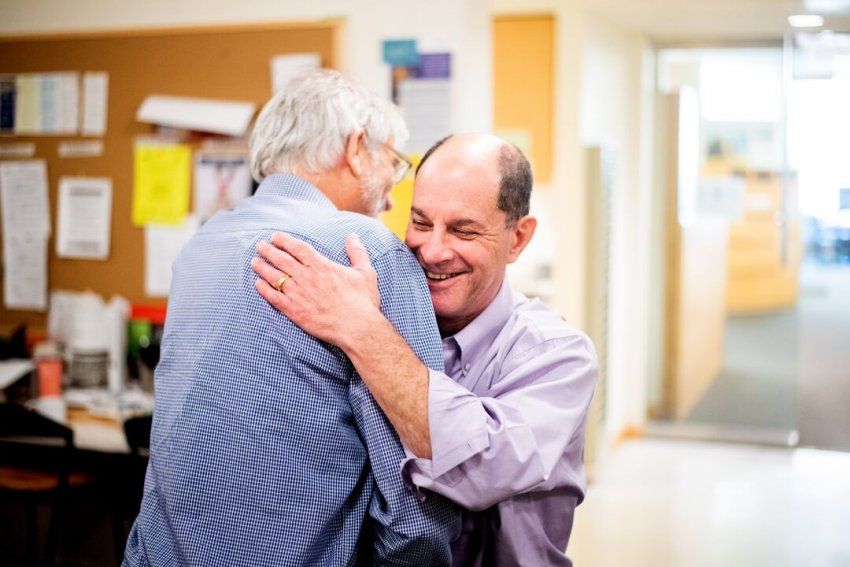Biography of David Julius

David Julius, PhD, is professor and chair of the Department of Physiology at UC San Francisco and holds the Morris Herzstein Chair in Molecular Biology and Medicine.
He is a member of the National Academy of Sciences and the American Academy of Arts and Science and has won numerous honors and awards. Those include the Kavli Prize in Neuroscience (2020), Breakthrough Prize in Life Sciences (2019), the Canada Gairdner International Award (2017), the Dr. Paul Janssen Award for Biomedical Research (2013), the Shaw Prize (2010), the Passano Award (2010), the Prince of Asturias Award for Technical and Scientific Research (2010), the Scolnick Prize from the McGovern Institute for Brain Research at MIT (2007), the Unilever Science Prize (2007) and the Klaus Joachim Zülch Neuroscience Prize (2006).
Julius was born on Nov. 4, 1955, in Brighton Beach, Brooklyn, where he attended public elementary and high schools. He received his B.S. degree in life sciences from the Massachusetts Institute of Technology (1973-77), gaining his first research experience in the laboratory of Alexander Rich studying mechanisms of tRNA aminoacylation. He conducted his graduate studies in biochemistry at UC Berkeley (1977-84), where he worked with Jeremy Thorner and Randy Schekman to elucidate mechanisms of peptide hormone processing and secretion in Saccharomyces yeast.
Julius was a postdoctoral scholar (1984-1990) in the laboratory of Richard Axel, at Columbia University, where his focus turned to neuropharmacology and receptor function. During this time, he developed novel expression-cloning methods, enabling him to identify genes that encode members of the serotonin receptor family. He joined UCSF in 1989.
A major focus of his work has been to identify and understand molecular mechanisms involved in our senses of touch and pain. His group has exploited the properties of natural products to discover a family of temperature-sensitive ion channel receptors that enable sensory nerve fibers to detect hot or cold temperatures.
These same channels, known as TRP (pronounced “trip”) channels, also respond to chemical stimuli that evoke sensations of heat or cold. The TRPV1 receptor, for example, responds to either warm temperatures or to capsaicin, the compound that gives chili peppers their “heat.” Likewise, the TRPM8 receptor responds to either cool temperatures or menthol. TRP receptors are of great clinical interest, because they are abundantly expressed in pain pathways, and pharmaceutical companies are working to find TRP-related compounds that may offer pain control without the side effects or addictive potential of opioid drugs.
In 2013, Julius and UCSF colleague Yifan Cheng, PhD, used electron microscopy to determine the structure of the TRPV1 receptor at near-atomic resolution. In 2015, Julius and Cheng used to same techniques to determine the structure of TRPA1, the so-called “wasabi receptor.”
Julius is married to Holly Ingraham, PhD, a Professor of Physiology at UCSF. Their son is Philip Julius.
Julius serves on the Board of Directors of The McKnight Endowment Fund for Neuroscience and is a member of the Scientific Advisory Board of the Pew Scholars Program in Biomedical Sciences. He served on the Scientific Advisory Committee of the Damon Runyon Cancer Research Foundation.